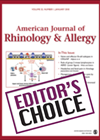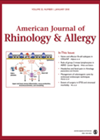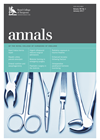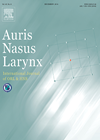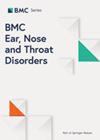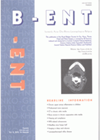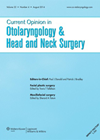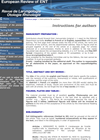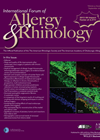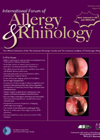
Journal Reviews archive for January 2015
Waiting for smell to recover after post-viral hyposmia
The patient with post-viral anosmia will always want to know how long they must wait to reach a plateau. This study from South Korea of a comparatively small group (20 controls and 63 patients) tells us that favourable prognostic indicators...
The stubborn polyp cases are ‘different’
The widely different behaviour of nasal polyp disease between patients is a major feature of rhinology practice and makes counselling of patients difficult when approaching their first operative intervention. Setting aside aspirin sensitivity (Samter’s triad), which is known to be...
Variability in the management of differentiated thyroid cancer (DTC)
This retrospective study analyses for the first time the management planning of thyroid surgeons across the specialties. A questionnaire was sent to members of ENT-UK, the British Association of Endocrine and Thyroid Surgeons, Association of Surgeons of Great Britain and...
What’s the risk of regrowth with partial (intracapsular) tonsillectomy
Partial (intracapsular) tonsillectomy is enjoying somewhat of a revival offering the potential for less postoperative pain and bleeding whilst relieving the obstructive element. The authors look at 303 patients, 82 of whom had partial tonsillectomy using coblation. They measured pre...
Laryngopharyngeal reflux (LPR) in posterior laryngitis
The authors of this study investigated the prevalence of acid reflux in the proximal oesophagus and functional gastrointestinal symptoms in patients with posterior laryngitis. They analysed plasma motilin as well as health-related quality of life (HRQOL) questionnaires before and after...
Deep neck infections
This study from Shanghai is a retrospective review of 142 patients presenting to an ENT hospital with deep neck infections (DNIs). The findings of the study are comparable to many of the previous studies, however the authors found tonsillitis and...
ENT emergencies
This Belgian paper reports the epidemiology of 1296 patients attending the emergency department with ENT problems over a five-year period. As expected the most common presentation was epistaxis, but interestingly vertigo seemed to be the second most common presentation to...
Anterior skull-base surgery: current opinion
This review examines the changes in the field of anterior skull-base surgery and the rapid advancement that has taken place in the last 10–15 years. Tumours of the anterior skull base that were once considered inoperable are now routinely resected...
Day care or admission for aesthetic nasal surgery?
Day-care surgery is gaining in popularity throughout the surgical specialities due to economical constraints and patient convenience. However this is not without risk and a careful procedure by procedure evaluation should be performed to prove the suitability of this type...
The septum, outside!
Extracorporeal sculpturing of the septum during septorhinoplasty (SRP) is a well-established technique. However, the extent of manipulations of the septum varies amongst authors. In a series of 630 patients undergoing SRP, the authors used a complex extracorporeal septal three dimensional...
What are the best minimal surgical techniques used for concha bullosa?
This prospective endoscopic and radiologic evaluation studied 42 patients who underwent concha bullosa surgery, amounting to a total of 55 conchae surgeries. The patients were allocated consecutively to either of the two groups. The presurgical and one year postsurgical endoscopic...
The effect of cocaine or adrenaline dressing during endoscopic sinus surgery
A randomised controlled study of 37 patients took place that underwent endoscopic sinus surgery for chronic rhinosinusitis and received adrenaline or cocaine-soaked patties. The study showed no difference in the mean surgical field scores between adrenaline and cocaine sides. Adequate...

